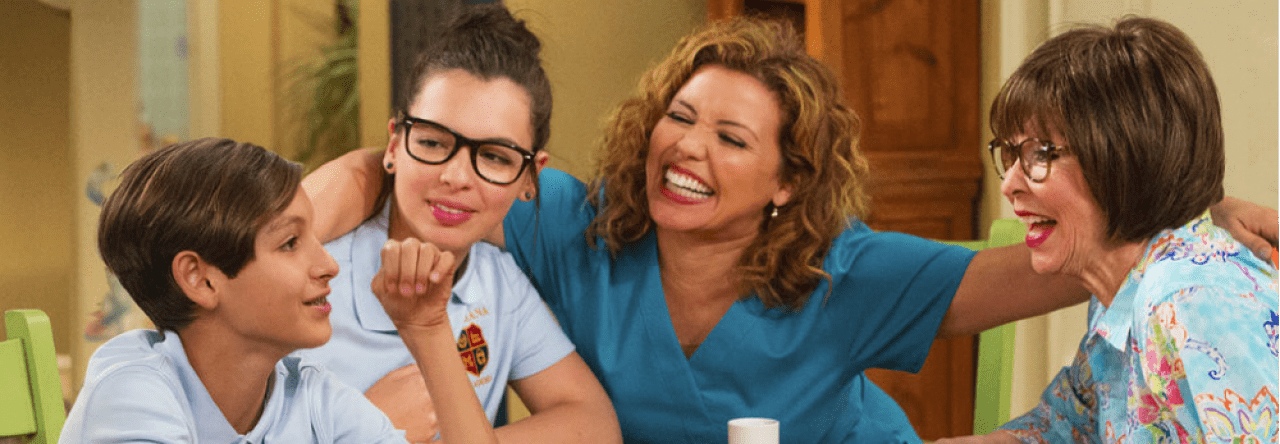Cinematography in The Middle has unique elements. The show emphasizes more quick cuts as opposed to long takes. Perhaps this is done to depict the rushed and frantic mom life Frankie endures daily. For instance, one shot may capture a brief conversation between Frankie and her boss, followed by a rapid transition to her supporting Sue at a swim try out. This exemplifies how quickly the Heck family is to support each other.
Lighting in The Middle is abundant, and it is often bright and sunny outside. Nothing says Flyover country quite like a blue sky over a cornfield. There are many colors in the indoor shots, but the colors together are not appealing. The walls in the house are green and the clothes worn are interesting colors, and somehow The Middle can recreate the home you lived in as a child. The palette of colors used reminds me of those ugly Christmas sweaters that have a lot of colors and look like a mess. For some reason you love the sweater, but it’s just so hideous. My interpretation of this is that it resembles the many great qualities in families yet the imperfections within them. Many facets of life have flaws, but sometimes flaws make things even more lovable; the family portrayed by The Middle is no exception.

Look at the monstrosity of colors used in this living room…I still somehow feel as if I’ve spent every family gathering in this exact room.
In my opinion, The Middle stands out because of its visual authenticity. The imagery is not deceptive; they don’t attempt to paint a perfect picture like in sunny California or bustling New York. Rather, they illustrate a humble Indiana town. As a viewer, it’s refreshing to be reminded that not everyone lives a superlative life surrounded by beauty and modern luxuries. The Middle derives its success by allowing most of the country to sympathize with its plot. Each time I watch the show I’m reminded of the many great family moments I’ve experienced inside similar ugly walls. The use of convincing cinematography establishes a more accurate representation of families and attaches the audience to the narrative.

Comments are closed.